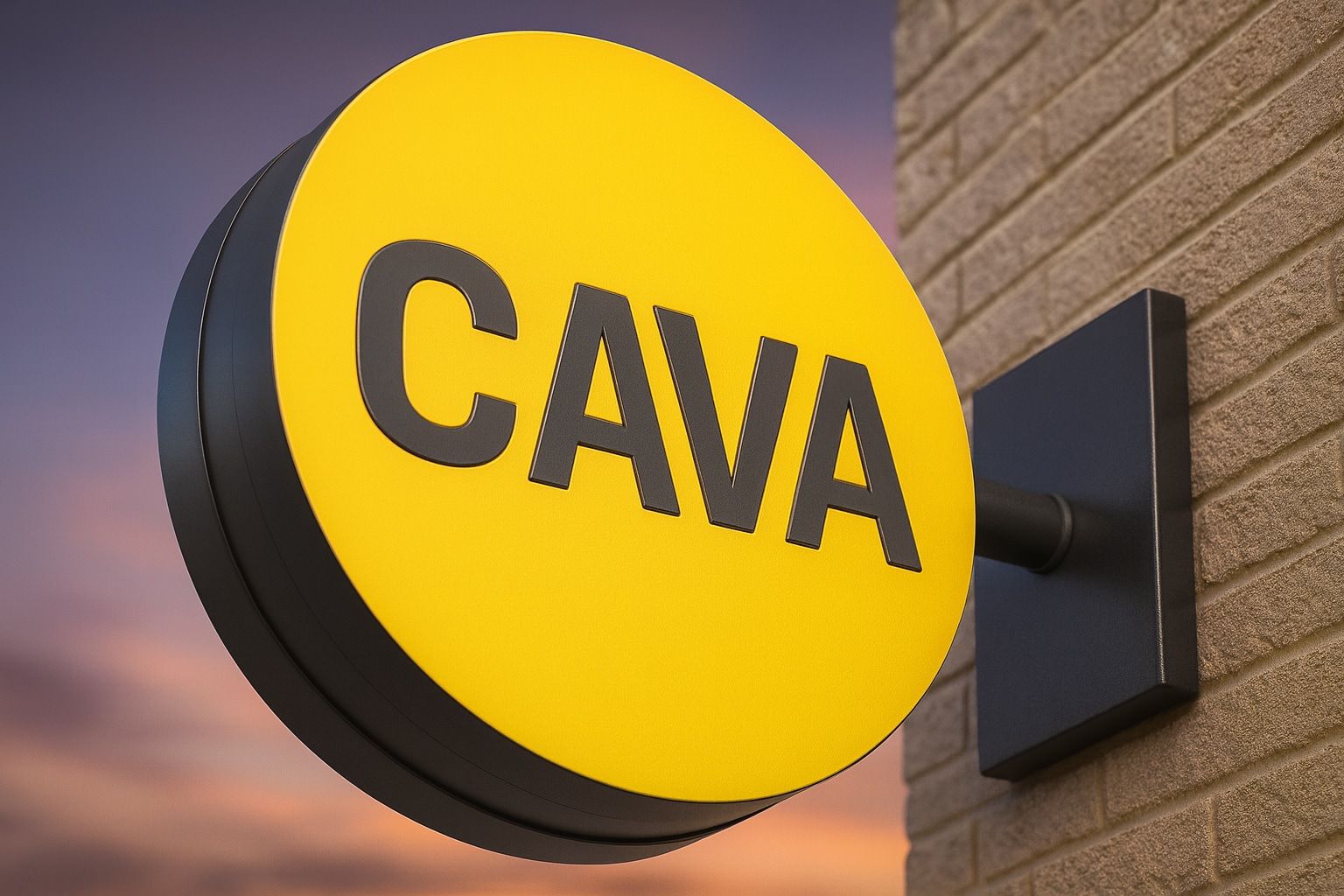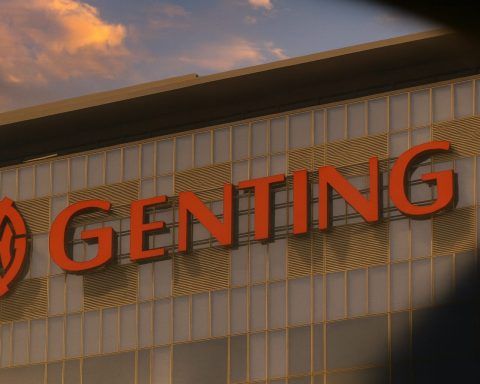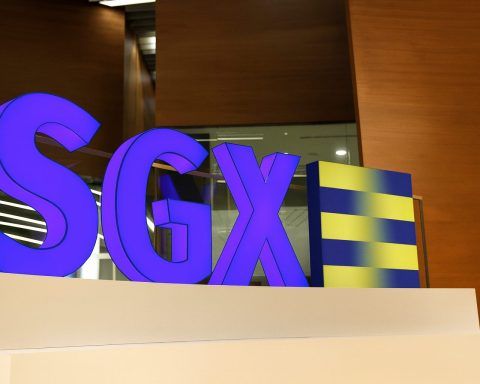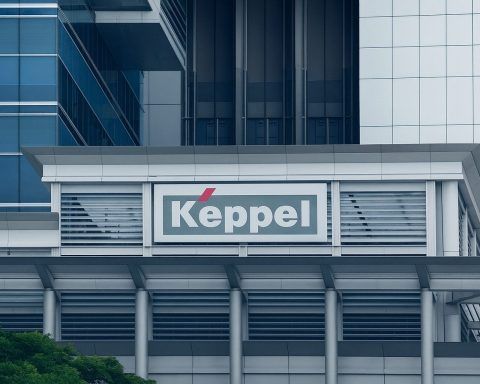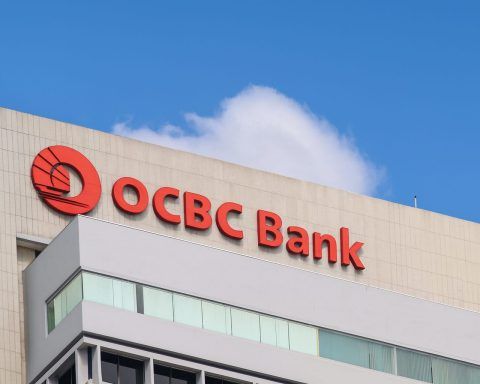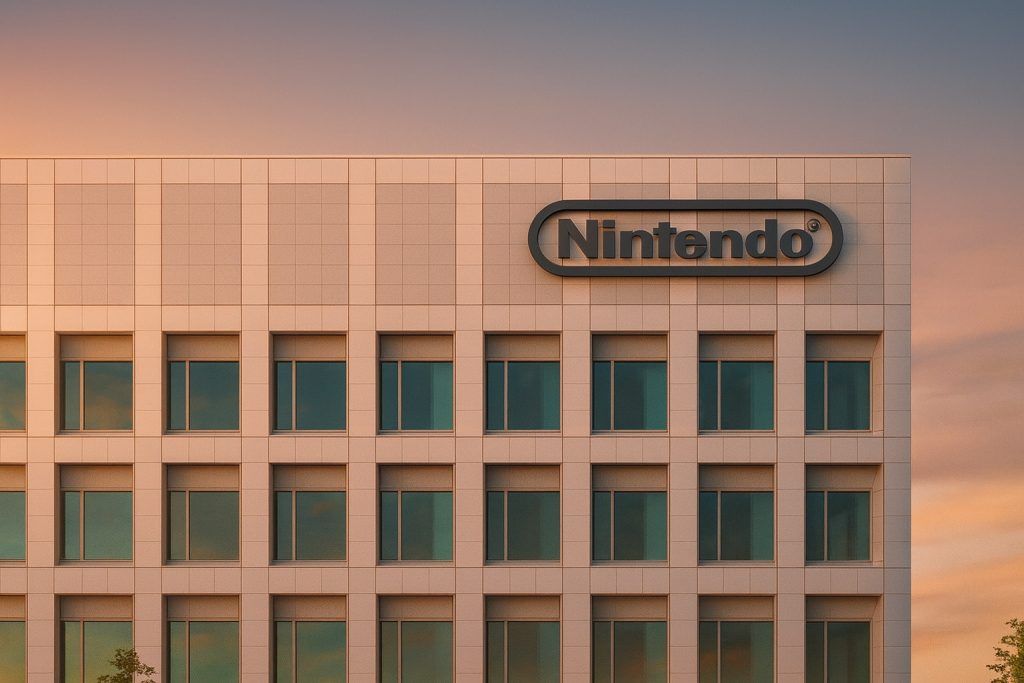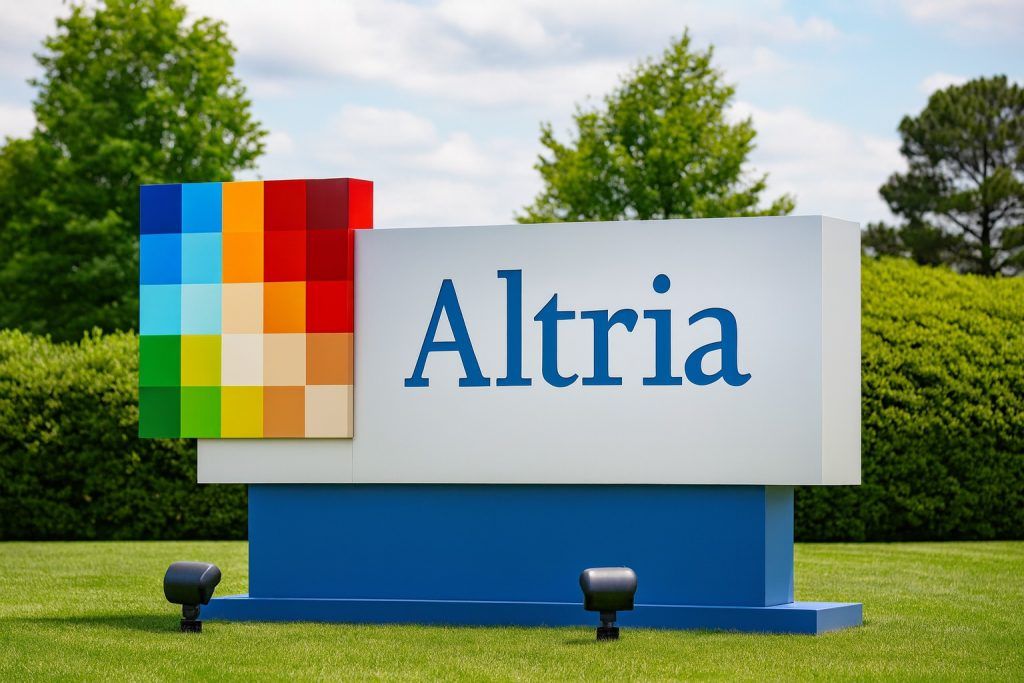- CAVA Hits New Low: Cava Group Inc. (NYSE: CAVA) shares slid to a 52-week low of $54.93 on Oct. 30, 2025, marking a –54.7% one-year change and leaving the stock about 62% below its post-IPO highs [1] [2]. The stock’s 52-week high was $172.43, highlighting the magnitude of the collapse [3].
- Fast Growth Despite Slump: The fast-casual Mediterranean chain continues to grow briskly. In the first half of 2025, revenue jumped 24% year-over-year to $612+ million with same-restaurant sales up 6.6% [4]. CAVA has expanded to 400+ locations (up ~17% YoY) and boasts solid restaurant-level margins (~26%) and rising comparable sales (around +14% YoY recently) as it leverages technology and AI for efficiency [5] [6].
- Analysts Split on Outlook:Bullish analysts see opportunity in the selloff. RBC Capital initiated coverage at Outperform with an $80 price target, calling CAVA a “dominant” emerging brand [7]. Jefferies likewise reiterated a Buy, viewing the plunge as a buying opportunity with a $100 target [8]. Cautious voices include Goldman Sachs (Neutral, $74 target) [9] and valuation models that flag CAVA as overvalued – one discounted cash flow analysis pegs fair value near $37.50 (≈69% below recent prices) [10].
- “Slop Bowl” Headwinds: CAVA faces sector-wide challenges. A much-discussed Business Insider “slop bowl” exposé in September questioned the value of pricey bowl-based meals, noting CAVA’s same-store sales growth slowed to just +2.1% last quarter (down from +14.4% a year earlier) [11]. Peers Sweetgreen and Chipotle also saw sales dip [12] as budget-conscious diners turn to cheaper options, pressuring fast-casual chains’ premium pricing models.
- Earnings & Expansion on Deck: All eyes are on CAVA’s upcoming earnings report (due in early November) for clues to a turnaround [13]. Meanwhile, the company is pressing ahead with expansion – it recently opened its first Miami location (its third in South Florida) [14] and even entered Detroit last month [15]. Management ultimately envisions 1,000 locations by 2032 [16], underscoring a long growth runway if consumer demand can keep up.
Stock Hits a Record Low
Cava’s stock has been on a steep slide since its euphoric post-IPO highs. This week, shares tumbled to $54.93, their lowest level in a year [17]. That price is well under half of where CAVA traded 12 months ago [18], and a far cry from the ~$170 peak the market once ascribed to this high-flying restaurant IPO. In fact, the stock now sits roughly 62% below its peak levels reached after its 2023 IPO [19]. The 52-week high of $172.43 underscores how dramatically sentiment has reversed [20].
What’s driving the collapse? Broad market volatility and rising interest rates have cooled investor appetite for richly valued growth stocks in 2025. But CAVA also faces company-specific challenges. After an initial post-IPO surge, the reality of moderating sales growth and questions about its valuation set in. Over the past year, the stock has shed more than half its value (–54.7%) [21], prompting investors to ask whether this is capitulation – or if further downside remains. Notably, even after falling so far, CAVA’s market capitalization (around $6–7 billion at ~$60/share) still reflects considerable growth expectations, leaving bulls and bears fiercely divided on what comes next.
Strong Growth Meets Valuation Questions
Ironically, the stock slump comes even as Cava’s business continues to deliver robust growth. The fast-casual Mediterranean chain has been rapidly opening new restaurants and attracting customers at a healthy clip. CAVA’s unit count reached about 398 locations recently – up ~17% from a year ago – and the company is on track to hit 1,000 restaurants by 2032 according to management’s long-term plans [22]. In the first 28 weeks of fiscal 2025 (roughly through mid-year), Cava’s revenue surged to $612+ million, a 24% year-over-year increase, while same-restaurant sales rose 6.6% [23]. The company has achieved solid restaurant-level profit margins (~26%) and net income growth – net income was over $44 million in that period, up 31% from the prior year [24], a notable feat in the restaurant industry. In short, Cava is profitable and growing, a combination many early-stage restaurant chains can’t claim.
However, the market’s concern is that growth is decelerating from earlier breakneck levels. CAVA’s comparable sales (a key measure of sales at existing locations) have cooled significantly: after jumping ~14% YoY in earlier periods [25], comp sales were up only about 2.1% in the most recent quarter [26]. This sharp slowdown in same-store growth has raised eyebrows. It suggests that as Cava expands, some locations may be cannibalizing sales or overall demand for $12–$14 grain bowls is hitting a ceiling. The “slop bowl” critique (so named by Business Insider for the mix-and-match bowl meals popularized by chains like Cava) pointed out that even industry leader Chipotle saw a 4% drop in quarterly same-store sales – one of its worst results since 2020 [27]. Cava, being a newer player, still grew comps, but the deceleration from +14.4% to +2.1% indicates diminishing momentum [28].
At the same time, valuation has been a sticking point. Even after falling into the $50s, CAVA trades at a rich earnings multiple due to its still-small profits. Its price-to-earnings (P/E) ratio is around 52×, far above the restaurant industry average (~23×) [29]. Simply Wall St’s analysis suggests that based on Cava’s expected growth and risk profile, a more “fair” P/E would be ~22× – implying the current price is inflated relative to earnings power [30]. Another way to value the company is by discounting its future cash flows: using optimistic forecasts (analysts project Cava’s free cash flow could grow from $11 million now to $195 million by 2029), a DCF model still estimates an intrinsic value of only ~$37.50 per share [31]. That calculation implies CAVA may be nearly 70% overvalued at today’s ~$60 price [32]. These valuation concerns help explain why, despite healthy growth, the stock has struggled – investors are unsure if growth is enough to justify the premium price.
On the other hand, there are metrics painting a more optimistic picture. Cava’s revenue is still growing ~28% annually [33] and the stock’s PEG ratio (price/earnings-to-growth) is a low 0.24 [34], hinting that for its growth rate, the valuation might not be as expensive as it looks. According to InvestingPro data, CAVA even appears “slightly undervalued” relative to one fair value estimate [35]. This tug-of-war between bullish growth indicators and bearish valuation models is at the heart of the debate on Cava.
Analysts Weigh In: Bulls vs. Bears
Wall Street analysts are similarly divided on Cava’s prospects. Several analysts have come out with positive endorsements despite the stock’s plunge. Earlier this month, RBC Capital initiated coverage on CAVA with an Outperform rating, arguing the selloff is overdone. RBC set an $80 price target, citing Cava’s strong unit growth and positioning as the “dominant brand” in fast-casual Mediterranean dining [36]. They highlight CAVA’s improving unit economics and growth runway as reasons the stock can rebound.
Likewise, Jefferies has remained bullish. The firm recently reiterated its Buy rating and $100 price target for CAVA, effectively telling clients that the recent pullback is a buying opportunity [37]. Jefferies analysts acknowledged concerns about slowing same-store sales, but they believe the market has become too pessimistic. In their view, Cava’s long-term expansion potential and brand strength outweigh short-term sales hiccups [38]. Jefferies sees the stock’s deep slide from its highs as an attractive entry point for value-oriented growth investors.
On the more cautious side, Goldman Sachs initiated coverage with a Neutral stance and a $74 target – essentially advising investors to wait and see [39]. Goldman’s analyst noted CAVA’s impressive growth but also pointed to competitive and execution risks, and a need to prove that high growth can continue as the chain scales. Until there’s more evidence, Goldman is sitting on the fence.
Beyond Wall Street banks, independent analyses also span the spectrum. As mentioned, the Simply Wall St valuation models suggest CAVA’s current price is hard to justify based on fundamentals [40]. But even within that analysis community, there’s debate: some scenario-based projections (assuming Cava can sustain ~20% annual revenue growth for years) yield fair value estimates in the $90–$100 range – implying significant upside [41] [42]. In fact, a set of 12 different fair value estimates for CAVA ranged from as low as ~$24 to as high as ~$119 [43], reflecting how uncertain the stock’s true value is. “There is clear debate on whether ambitious growth targets are offset by the risk of market saturation,” the Simply Wall St report noted, underscoring the divergent narratives around Cava [44].
For now, sentiment appears mixed but tilting negative – the stock wouldn’t be at $55 if bulls were in control. However, the presence of high-conviction bulls (with targets well above the current price) suggests any positive surprise in execution could spark a sharp rebound. As one analysis put it, despite trading at a ~62% loss from its peak, CAVA “could offer a compelling long-term setup” for patient investors at these levels [45]. The big question is whether the market has been too pessimistic or simply realistic about Cava’s trajectory.
Sector Pressures: The “Slop Bowl” Backlash
It’s important to view Cava’s troubles in the context of a broader fast-casual slowdown affecting peer companies. In recent years, fast-casual eateries specializing in customizable “bowl” meals (salads, grain bowls, etc.) were stock market darlings. But in 2025, even the strongest of these chains have hit a speed bump. A candid Business Insider investigation in September – bluntly titled “America’s favorite slop bowl chains are in trouble” – sent a chill through the sector [46]. The report highlighted that customer traffic and same-store sales are slipping at high-profile bowl-based chains:
- Sweetgreen reported a –7.6% drop in same-store sales in Q2, despite aggressive menu innovation and price hikes [47].
- Chipotle Mexican Grill, the $50B giant of fast-casual, saw a –4% decline in comps – one of its worst quarters since 2020 [48].
- Cava managed to stay positive, but only barely: its +2.1% same-store sales growth in the latest quarter pales in comparison to the +14.4% comp growth it enjoyed in the prior-year period [49]. In other words, Cava’s growth is slowing to a crawl on a comparable-store basis.
The article attributed these struggles to value-conscious consumers rethinking the appeal of a $15 bowl. Post-pandemic inflation has driven fast-casual menu prices sharply higher (Chipotle’s chicken bowl costs ~45% more than in 2019, and Cava’s grain bowl ~24% more [50]). Customers now realize that for $15–$20, they can often get a full-service restaurant meal – or opt for cheaper fast-food alternatives – rather than a counter-service bowl [51]. The result is that formerly untouchable chains like Chipotle, Cava, and Sweetgreen are suddenly having to justify their price premium. As Investing.com summed up, the market reaction to the “slop bowl” critique showed investors’ concern about the sustainability of these chains’ premium pricing models as diners grow more price-sensitive [52] [53].
For Cava, this environment creates a tighter rope to walk. The company is still expanding rapidly into new markets, which traditionally boosts sales, but if existing stores stagnate or decline, overall growth will disappoint. The fast-casual space is also crowding with competitors – not just direct Mediterranean rivals, but salad bowl concepts, poke bowl shops, and even traditional fast-food chains upping their healthy offerings. The Business Insider piece may have sounded hyperbolic, but it tapped into a real shift: consumers are seeking better value for money in their lunch options, and “bowl fatigue” could be setting in. This puts pressure on Cava to keep its menu compelling (e.g. adding value – Sweetgreen’s CEO responded by increasing protein portions 25% to improve bang-for-buck [54]) and to defend its customer base as it grows.
The silver lining for Cava is that it is still posting positive comp sales (unlike some peers), and its concept has a differentiated Mediterranean flavor profile that isn’t easily replicated by burger or burrito chains. Additionally, Cava’s affluent core customers may be a bit less price-sensitive than the average fast-food diner. But there’s no doubt that macro headwinds – inflation, high student loan payments resuming, and competition – have introduced a new element of risk to CAVA’s growth story. This broader context helps explain why Cava’s stock is struggling even as its revenue and unit count rise: investors fear the fast-casual bowl boom has peaked, and Cava will need to work harder to reaccelerate growth.
Looking Ahead: Expansion Plans and Upcoming Catalysts
With the stock down so much, what could turn things around? The next major catalyst is likely CAVA’s Q3 2025 earnings report, due in the first week of November (the company reports results in about 5 days as of Oct. 30) [55]. Investors will be scrutinizing that report for signs of stabilization – or further deterioration – in same-store sales. Any update on Q4 trends or 2026 outlook will be critical. If Cava can show that the 2% comp growth was a trough and that traffic or sales are rebounding in newer markets, it could rebuild confidence. Conversely, an outright comp decline or weak guidance could deepen the pessimism. The earnings release will also shed light on margins (can Cava maintain ~25–26% restaurant margins amid cost inflation?) and unit economics for new stores. Given how hard the stock has sold off, even a modestly upbeat earnings surprise or confident management commentary might spark a relief rally.
Beyond quarterly numbers, Cava’s expansion strategy remains a key part of the bull thesis. The company is pushing into new regions and urban centers at a steady clip. Just in the past month or so, CAVA opened its first restaurant in Miami’s Brickell district, marking its entry into the South Florida market [56]. The chain also planted a flag in the Midwest – opening its first Detroit-area location in September as it extends into Michigan [57]. Cava is now operating in 28 states plus D.C. [58], reflecting a coast-to-coast growth trajectory. Management’s target of 1,000 restaurants by 2032 is ambitious but, if achieved, would roughly triple the current footprint [59]. Such expansion could drive years of revenue growth, assuming consumers in new markets embrace the brand as they have on the coasts.
However, rapid expansion also brings execution risks. Notably, CAVA experienced a leadership shake-up during this growth spurt: in late September, the company announced the departure of Chief Operations Officer Jennifer Somers, who had overseen operations since 2021 [60]. Her exit was categorized as a “termination without cause,” and an interim operations head (SVP Jonathan Braatvedt) was appointed while a successor is sought [61]. This news, coinciding with the Detroit launch, underscores that Cava is managing change on multiple fronts. According to one analysis, this combination of an executive transition amid rapid store openings “underscores the company’s commitment to growth [and] operational adaptability,” but also places a premium on maintaining operational excellence so that expansion doesn’t outpace the company’s capacity [62] [63]. Investors will be watching to see if Cava can smoothly integrate new stores, new markets, and new leadership without stumbling.
In the big picture, Cava’s story is far from over. The company has a strong balance sheet from its IPO cash, a popular concept that fuses healthy and convenient dining, and a track record of double-digit growth. The current stock price arguably bakes in a lot of bad news already. With shares in the mid-$50s, even moderate success in righting the ship could yield upside. Indeed, some experts argue the market may be “wrong” about CAVA’s prospects given its attractive financials and runway [64]. Cava’s management will need to prove the doubters wrong by delivering consistent growth in new and existing stores alike.
Bottom Line: Cava’s fall from grace has been dramatic – but the next chapters are still being written. The upcoming earnings and holiday season results will shed light on whether this fast-casual star can regain its shine. If sales trends improve and expansion continues without major hiccups, today’s beaten-down stock price could start to look like a bargain. But if headwinds persist – sluggish comps, rising costs, or execution errors – CAVA may have further to fall. As of now, the stock sits at a crossroads, with bulls and bears watching closely to see if this 52-week low marks the turning point or just another stop on the way down. Investors should brace for more volatility, but also keep an eye on the long-term prize: a potential national brand in the making, trading at a fraction of its former valuation. The next few weeks could be telling for Cava’s trajectory in 2026 and beyond.
Disclosure: The author [of this article] has no position in CAVA. This report relies on publicly available information and analyst commentary as cited above [65] [66]. Readers are advised to conduct their own due diligence. The Cava saga – from IPO darling to battered stock – illustrates both the risks and rewards of growth investing in the restaurant sector. The coming days will show whether CAVA can cook up a comeback.
Sources: Cava Group stock news and analysis from Yahoo Finance/Simply Wall St [67] [68], Investing.com [69] [70] [71], ts2.tech market commentary [72] [73], and Business Insider via Investing.com [74] [75]. All data as of Oct. 30, 2025.
References
1. za.investing.com, 2. ts2.tech, 3. za.investing.com, 4. ts2.tech, 5. ts2.tech, 6. ts2.tech, 7. www.marketscreener.com, 8. za.investing.com, 9. za.investing.com, 10. www.webull.com, 11. www.investing.com, 12. www.investing.com, 13. za.investing.com, 14. za.investing.com, 15. www.sahmcapital.com, 16. ts2.tech, 17. za.investing.com, 18. za.investing.com, 19. ts2.tech, 20. za.investing.com, 21. za.investing.com, 22. ts2.tech, 23. ts2.tech, 24. ts2.tech, 25. ts2.tech, 26. www.investing.com, 27. www.investing.com, 28. www.investing.com, 29. www.webull.com, 30. www.webull.com, 31. www.webull.com, 32. www.webull.com, 33. za.investing.com, 34. za.investing.com, 35. za.investing.com, 36. www.marketscreener.com, 37. za.investing.com, 38. za.investing.com, 39. za.investing.com, 40. www.webull.com, 41. www.sahmcapital.com, 42. www.sahmcapital.com, 43. www.sahmcapital.com, 44. www.sahmcapital.com, 45. ts2.tech, 46. www.investing.com, 47. www.investing.com, 48. www.investing.com, 49. www.investing.com, 50. thehustle.co, 51. www.investing.com, 52. www.investing.com, 53. www.investing.com, 54. www.investing.com, 55. za.investing.com, 56. za.investing.com, 57. www.sahmcapital.com, 58. www.sahmcapital.com, 59. ts2.tech, 60. www.nrn.com, 61. www.nrn.com, 62. www.sahmcapital.com, 63. www.sahmcapital.com, 64. www.sahmcapital.com, 65. za.investing.com, 66. ts2.tech, 67. www.webull.com, 68. www.webull.com, 69. za.investing.com, 70. za.investing.com, 71. www.investing.com, 72. ts2.tech, 73. ts2.tech, 74. www.investing.com, 75. www.investing.com
